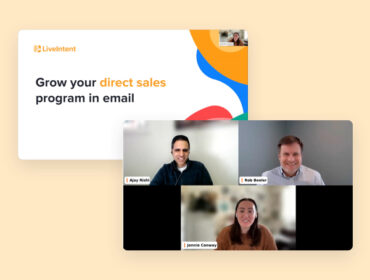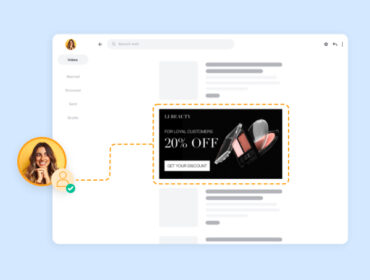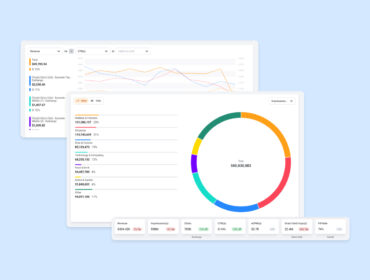Building audiences in today’s digital world
In the fight to build audiences in today’s digital world, publishers are turning to email as a valuable, trusted, and time-tested channel.
Just look at Axios, which now runs over 30 unique, hyper-targeted newsletters like Axios AM/PM, Axios Latino, Axios Markets, Axios Media Trends, and Axios Gaming.
“Newsletters play a critical role in building a connection and a habit over time,” said Ryan Kellett, VP of audience at Axios. “And everyone has email. They have to in order to function in society.”
To help publishers tap into this wealth of email engagement, we sat down with Kellett and got his take on changing consumer habits, subscription models, and the rise of newsletter content.
What does it mean to build an audience as a publisher in today’s digital world?
The first step to building an audience is understanding exactly who your readers are and what value you can provide to them.
“You can have all the fancy tactics in the world, but if you don’t really understand who you’re trying to reach, it doesn’t matter,” Kellett said. “If you understand a reader’s needs and desires, you can tap into that, serve that need, continue to get better at it, and extract more value over time.”
Axios, for example, is focused on reaching smart professionals who are engaged in their work life and curious about the world. And the publisher continues to engage that audience with new offerings like Axios Local, which now delivers community-driven news across 14 different cities.
Newsletter engagement is booming, and more publishers are relying on email to build and nurture audience relationships. (So much for those murmurs of newsletter subscription fatigue.)
“You can have full products that are meant to be consumed in the inbox,” Kellett said. “It’s really about creating that connection and it feels very personal. It’s in someone’s inbox next to the note from their mom or their bank statement.”
As Cooper put it, email is really like another on-demand channel.
“Content arrives in your inbox and you have it there to consume whenever you want,” he said, “similar to Netflix or Hulu or other streaming services.”
How has the way publishers engage with audiences changed?
As consumer habits have evolved over the last 5-10 years, publishers have adapted to better drive engagement. Kellett, for example, believes in helping readers build habits around their content experiences.
“People are largely creatures of habit, and you can really zoom in on one particular point in your day and say, ‘How can we serve the person the best for when they wake up in the morning?’ Or ‘what is the last read before they go to bed?’ Or ‘what are they scrolling through when they’re watching Netflix on the couch at night?'”
What’s your perspective on sponsored content?
Some publishers launch sponsored content to create more seamless ad experiences for their readers. They just have to make sure it really matches the voice and tone of their organic content.
“It’s done poorly when it doesn’t feel philosophically part of the same organization or not cut from the same cloth,” Kellett said.
That’s why Axios produces all of its content with what it calls “smart brevity.” That involves using formatting like bullet points and bolding to create a recognizable, comprehensive style for its copy.
Axios is launching a paid subscription service called Axios Pro, which will include three separate verticals. And its using data and insights from its free newsletter offerings to inform its strategies.
“We want to provide not just more value but we want to go the full distance and really deliver industry-specific news that is the most relevant and up-to-date, and really captures a particular industry in this case,” Kellett said. “Our newsletters give us the ability to move into this other space and spin off a new product that goes even deeper.”
How has content consumption changed with consumers?
Consistently is crucial for gauging changes in content consumption, according to Kellett. If you deliver a newsletter every morning, for example, and the engagement metrics suddenly drop on Thursday, you know something is off.
“Because you have built this very consistent delivery mechanism […] you can really get to know your audience,” Kellett said. “How much a reader is consuming and what are their patterns? What do they love to read and what do they not?”
How do you leverage zero-party data?
Zero-party data is a trendy term for information your customers intentionally give you, like through a newsletter signup, survey, or questionnaire.
Axios knows zero-party data well. The publisher launches regular surveys, and newsletter writers also frequently receive direct replies from subscribers about their content experiences.
“I think it’s important that we as an organization come together and review those pieces,” Kellett said. “We could look at survey results across Axios newsletters and a newsletter writer can say, ‘Oh, hey, that absolutely matches with what I’m hearing qualitatively from readers.'”
As 2022 unfolds, more publishers will likely be launching email newsletters. And Kellett encourages them to get creative and test new ideas.
“Definitely take some time to experiment, get some feedback, hear from people, write a bunch, and really see what that is like,” he said.
Kellett also stresses the importance of writing custom content for email — not just retrofitting existing content.
“Really invest the time and energy to think about what is different [with email],” he said. “If you’re getting results and starting to build an audience, settle down and say, ‘Ok, what does it mean to do this really, really well and how can we convey that information in a way that makes sense for the inbox?'”


